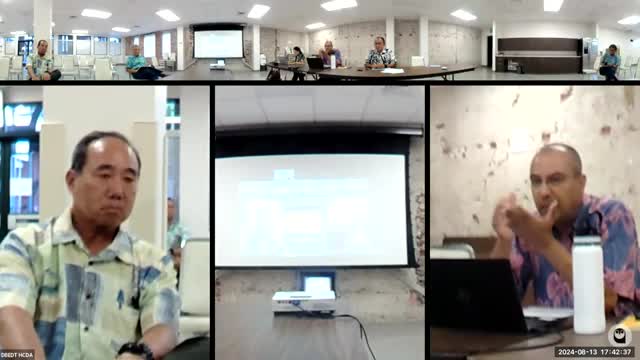Housing Crisis Deepens as Seniors Hold onto Homes
August 15, 2024 | Hawaiʻi Community Development Authority, Executive , Hawaii

This article was created by AI summarizing key points discussed. AI makes mistakes, so for full details and context, please refer to the video of the full meeting. Please report any errors so we can fix them. Report an error »

In a recent government meeting, officials discussed the pressing issue of housing affordability, particularly the challenges faced by older homeowners. A significant point raised was the reluctance of older individuals to sell their homes, primarily due to the financial implications of capital gains taxes on properties that have appreciated significantly over the years.
One speaker highlighted that many older homeowners purchased their properties decades ago for around half a million dollars. Today, these homes could sell for upwards of one and a half million, leading to substantial tax burdens that discourage them from moving. This stagnation in the housing market is exacerbated by the high costs of new housing options, which remain out of reach for many potential buyers, including younger families and first-time homeowners.
The discussion also touched on the broader implications of this trend, noting that the lack of movement in the housing market limits opportunities for new buyers to enter the market. The current market rates for two and three-bedroom units hover around $800,000 to $900,000, and even with potential discounts, affordability remains a significant barrier.
Participants expressed concern that the existing housing landscape is not conducive to encouraging older homeowners to downsize, as the available options do not meet their financial needs or expectations. This situation not only affects the older demographic but also has a ripple effect on the overall housing market, making it increasingly difficult for new residents to find affordable housing solutions.
The meeting underscored the urgent need for policy discussions aimed at addressing these challenges, with a focus on creating more affordable housing options and incentivizing movement within the housing market.
One speaker highlighted that many older homeowners purchased their properties decades ago for around half a million dollars. Today, these homes could sell for upwards of one and a half million, leading to substantial tax burdens that discourage them from moving. This stagnation in the housing market is exacerbated by the high costs of new housing options, which remain out of reach for many potential buyers, including younger families and first-time homeowners.
The discussion also touched on the broader implications of this trend, noting that the lack of movement in the housing market limits opportunities for new buyers to enter the market. The current market rates for two and three-bedroom units hover around $800,000 to $900,000, and even with potential discounts, affordability remains a significant barrier.
Participants expressed concern that the existing housing landscape is not conducive to encouraging older homeowners to downsize, as the available options do not meet their financial needs or expectations. This situation not only affects the older demographic but also has a ripple effect on the overall housing market, making it increasingly difficult for new residents to find affordable housing solutions.
The meeting underscored the urgent need for policy discussions aimed at addressing these challenges, with a focus on creating more affordable housing options and incentivizing movement within the housing market.
View full meeting
This article is based on a recent meeting—watch the full video and explore the complete transcript for deeper insights into the discussion.
View full meeting
